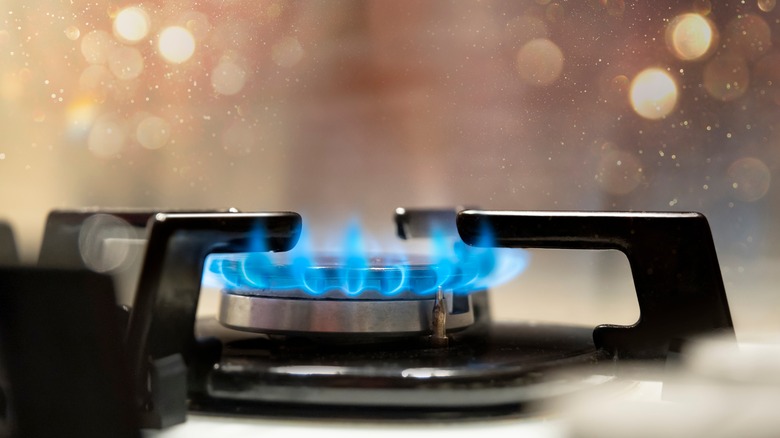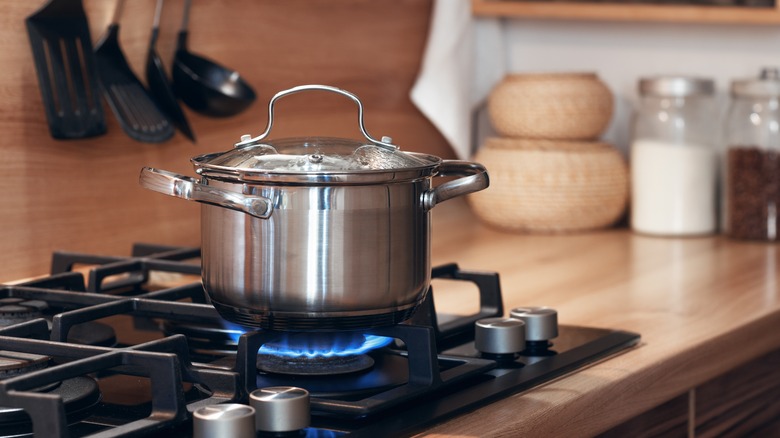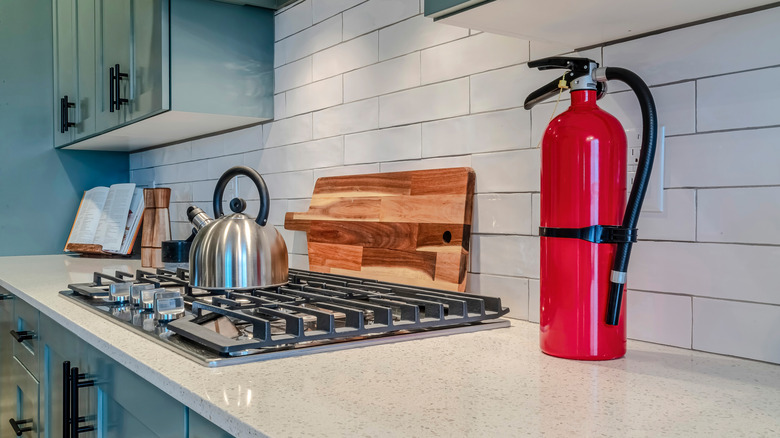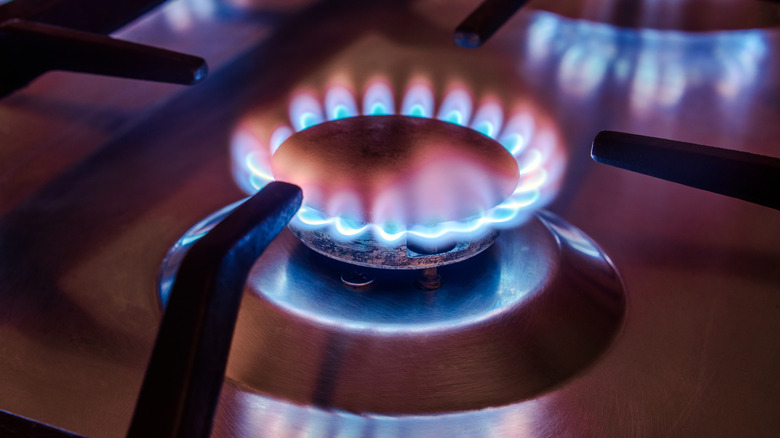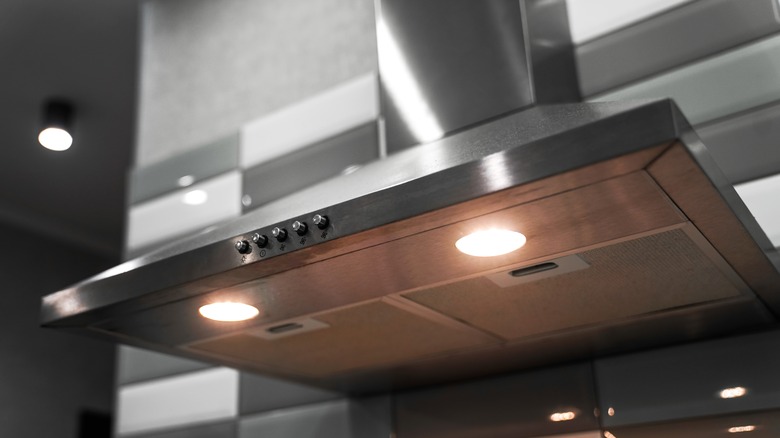The Gas Vs. Electric Oven Debate, Explained
Last week, a representative from the U.S. Consumer Products Safety Commission told Bloomberg News that, because of the indoor air pollutants given off by natural gas ranges, the agency could consider banning them. Apparently, this seemingly ad-libbed comment by one agency commissioner was enough of an ignition point to spark yet another front in the endless topics of disagreement.
The Bloomberg piece was prompted by an article published in December by the International Journal of Environmental Research and Public Health, which links the pollution from gas stoves to a number of respiratory ailments in children and adults. Specifically, the article notes that as many as 13% of childhood asthma cases can be attributed, at least in part, to gas stoves.
The resulting firestorm of tweets and talking points from politicians and pundits took over trending topics and offered an expedient flashpoint for a parade of feverish blowhards to publicly boil over with some fresh, home-cooked outrage. But what's really at stake here for gas stove enthusiasts? The team at Tasting Table is here to separate fact from inflamed fiction, and to help you understand the fate of your beloved range.
Hot takes and hot air
Seizing upon the Bloomberg piece as a vital hot-button issue of our time, the political Twitterverse leaped at a new opportunity to spark the fury of their disgruntled constituencies, reigniting the spirit of past rhetorical debates of significant consequence.
Stoking the fire was Governor Ron DeSantis (R-FL) who commissioned his best graphic designers to slap together a less-than-memeable take on the Gadsden Flag, replacing the iconic coiled snake with a drawing of a stove emblazoned with the governor's autograph.
Thankfully, this online panic is just that — panic. While certainly such a ban on gas stoves would be a costly and potentially devastating turn of events, fortunately for restaurateurs — and the rest of us – no such ban is being realistically considered. But that doesn't mean you shouldn't be aware of how to properly manage your gas stove if you have one, as it's important to know how to stay safe.
The heat is off: No one is banning gas stoves
We want to douse your fears and offer a chill blast of reason: There will be no army of jack-booted appliance pirates arriving at your door to confiscate your gas range. So, take a deep breath and cool your jets.
After the explosion of interest in the issue erupted last week, USCPSC Chair Alex Hoehn-Saric went online to set the record straight, saying that while the agency is looking into ways of making the appliances safer, "I am not looking to ban gas stoves and the CPSC has no proceeding to do so." In other words, even if they wanted to, they don't have the intention to affect such a sweeping ban.
States, on the other hand, may have more authority and motivation to regulate consumer natural gas usage. According to a government report, only about 40% of Americans cook on gas stoves, and the majority of them are located in California, New York, New Jersey, and scattered about the Mid-Atlantic. New York's governor, Kathy Hochul (D), is looking into banning gas appliances in new residential construction statewide after the New York City Council voted in favor of a similar measure. In California, the Air Resources Board voted to ban gas furnaces and water heaters by 2030, though their effort does not mention stoves, (via The Washington Post and Bloomberg).
Risks associated with gas stoves
So, what's so bad about gas stoves? Plenty, according to researchers who, over the last 50 years, have compiled irrefutable evidence that emissions from gas stoves are harmful to humans, (via The New York Times).
Natural gas stoves emit invisible and odorless poisons into our household environments called nitrous oxides, respiratory irritants also found in conventional automobile emissions. Other gasses like carbon monoxide, formaldehyde, and methane are also byproducts of firing up a gas range, and all add up to indoor pollution levels that exceed standards set by the EPA for outdoor pollution levels.
People in the most danger of ill effects from their gas stoves are children and people with existing respiratory illnesses. According to the American Lung Association, in addition to the risks for asthma-related illness, mortality rates among cancer patients appear to increase significantly when exposed to NO2. Other outcomes like cognitive impairment, cardiovascular harm, lower birth weights, and premature death are also associated with exposure to these dangerous emissions.
How to mitigate the risks of a gas stove
The key to reducing the levels and concentration of indoor air pollution your gas stove emits is good ventilation. This is best achieved with the regular use of a well-maintained hood that vents dangerous gasses outside the home.
Many home cooks will only use their hood when searing meat or cooking at high heat, activities that tend to produce a lot of smoke and might set off a fire alarm. But using your hood whenever your stove is on can greatly reduce the number of toxic pollutants that get dispersed into your home's breathable air. For best results, be sure your hood is cleaned regularly to ensure maximum ventilation and to prevent the risk of fire.
If you don't have a hood over your stove, or if your hood doesn't vent outside, try to ventilate your kitchen by opening a window and facing a fan toward the outside. Anything you can do to increase airflow and to direct the noxious gasses out of the home.
Finally, placing a HEPA air filtration system in or near your kitchen can also mitigate the risks posed by your gas stove, (via The New York Times). While the dangers to the health of your family presented by gas stoves are real, they are also manageable if taken seriously and available solutions are employed.
Induction burners are the future
Chefs and home cooks love gas stoves because of the precision when controlling heat levels. Old electric stoves with their coiled heating elements are almost universally hated among most cooks because they take forever to warm up, and when it's time to dial back the heat, they take even longer to cool down. Until somewhat recently, those were your only two options.
Enter induction burners, which use electromagnetism as their heat source, offering cooks the precision of gas without the dangerous pollutants. The best induction burners are multiple times hotter than a household gas stove. That means they can boil a pot of water in about half the time it would take using gas.
If there is to be a transition away from gas cooking in American homes, it will not come as a result of blanket government bans. Much like the move toward electric vehicles, it will come as a combination of improving technology, economic incentives, environmental regulation, and gradual, guided adoption.
To wit, the recently-passed Inflation Reduction Act offers qualifying homeowners up to $840 in rebates toward the purchase of electric ranges. These electrification incentives are geared toward low- to middle-income families where the effects of household pollutants have an outsized effect, and lead to more negative outcomes for people within those economic demographics.
